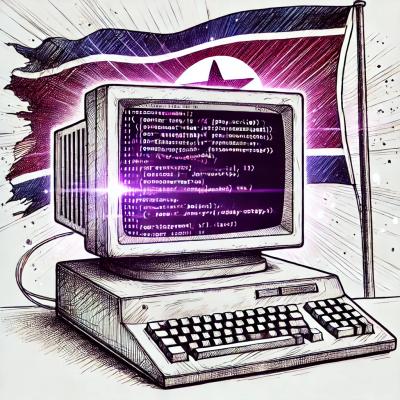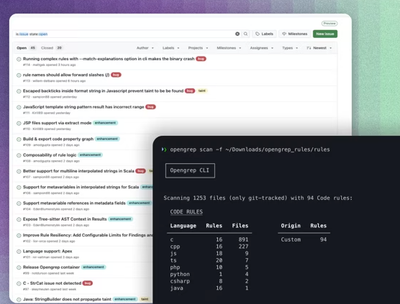
Research
Security News
Lazarus Strikes npm Again with New Wave of Malicious Packages
The Socket Research Team has discovered six new malicious npm packages linked to North Korea’s Lazarus Group, designed to steal credentials and deploy backdoors.
@ceeblue/webrtc-client
Advanced tools
Requirements | Usage | Examples | Building locally | Documentation | Contribution | License
The Ceeblue WebRTC Client is a generic client library designed to simplify the implementation of WebRTC functionalities for Ceeblue customers.
The client library addresses common challenges faced by developers:
| Item | Description |
|---|---|
| Ceeblue Account | To create a Stream, you will need an active account with Ceeblue Streaming Cloud. A trial account is sufficient. If you do not have one yet, you can request one on the Ceeblue website. |
| Stream | To use this library, you'll first need to create a stream either through our Rest API or on the dashboard. Use the following steps:
|
| Node Package Manager (npm) | Download and install from https://nodejs.org/en/download |
| http-server | (Optional) Simple, zero-configuration command-line static HTTP server The http-server is useful to explore the WebRTC client examples or the documentation locally when you do not have a host. To start the server, use the following command: http-server . -p 8081 |
Add the library as a dependency to your npm project using:
npm install @ceeblue/webrtc-client
Then import the library into your project with:
import * as WebRTC from '@ceeblue/webrtc-client';
💡 TIP
If your project uses TypeScript, it is recommended to set
"target": "ES6"in your configuration to align with our usage of ES6 features and ensures that your build will succeed (for those requiring a backwards-compatible UMD version, a local build is advised). Then defining the compiler option"moduleResolution": "Node"in tsconfig.json helps with import errors by ensuring that TypeScript uses the correct strategy for resolving imports based on the targeted Node.js version.{ "compilerOptions": { "target": "ES6", "moduleResolution": "Node" } }
To publish the stream <streamName> to <endPoint>, use the Streamer class and the variables you saved while setting up the stream in the dashboard Requirements. For a full example, see push.html in Examples.
import { Streamer } from '@ceeblue/webrtc-client';
const streamer = new Streamer();
streamer.onStart = stream => {
console.log('start streaming');
}
streamer.onStop = _ => {
console.log('stop streaming');
}
const stream = await navigator.mediaDevices.getUserMedia({ audio: true, video: true });
streamer.start(stream, {
endPoint: <endPoint>,
streamName: <streamName>,
iceServer: {
urls: ['turn:' + <endPoint> + ':3478?transport=tcp', 'turn:' + <endPoint> + ':3478'],
username: 'csc_demo', credential: 'UtrAFClFFO'
}
});
To play the stream <streamName> from <endPoint>, use the Player class and the variables you saved while setting up the stream in the dashboard Requirements. For a full example, see play.html in Examples.
import { Player } from '@ceeblue/webrtc-client';
const player = new Player();
player.onStart = stream => {
videoElement.srcObject = stream;
console.log('start playing');
}
player.onStop = _ => {
console.log('stop playing');
}
player.start({
endPoint: <endPoint>,
streamName: <streamName>,
iceServer: {
urls: ['turn:' + <endPoint> + ':3478?transport=tcp', 'turn:' + <endPoint> + ':3478'],
username: 'csc_demo', credential: 'UtrAFClFFO'
}
});
To understand how to use the library through examples, we provide three illustrations of its implementation:
In your project directory, if you have installed the http-server service, execute the following command from the Terminal prompt by navigating to:
http-server . -p 8081
Navigate to the specified address in your browser, making sure to replace any placeholders in the URL with the variables you have copied during the stream setup in the dashboard.
http://localhost:8081/examples/streamer.html?host=<endPoint>&stream=<streamName>
Click on Start streaming. Upon doing so, a live stream from your webcam will initiate. Should your browser request permission to access your camera, ensure to grant it.
In the address bar of a separate browser window, enter the following address, making sure to replace the placeholders in the URL with the variables you have copied while configuring the stream setup in the dashboard.
http://localhost:8081/examples/player.html?host=<endPoint>&stream=<streamName>
Click Play to start watching the live stream.
webrtc-client folder and run npm install to install packages dependencies.npm run build. The output will be five files placed in the /dist/ folder:
git clone https://github.com/CeeblueTV/webrtc-client.git
cd webrtc-client
npm install
npm run build
💡 TIP
To build a UMD (Universal Module Definition) version compatible with older browsers, you can run the following command:
npm run build:es5To automatically build bundles when any modification has been applied, you can run a watch command. The watch command will continuously monitor your project files for changes and rebuild the bundles accordingly.
npm run watchOr for ES5 (UMD):
npm run watch:es5
This monorepo also contains built-in documentation about the APIs in the library, which can be built using the following npm command:
npm run build:docs
You can access the documentation by opening the index.html file in the docs folder with your browser (./docs/index.html), or if you have installed and started the http-server service by navigating to:
http://localhost:8081/docs/
All contributions are welcome. Please see our contribution guide for details.
By contributing code to this project, you agree to license your contribution under the GNU Affero General Public License.
FAQs
Ceeblue WebRTC Client
We found that @ceeblue/webrtc-client demonstrated a healthy version release cadence and project activity because the last version was released less than a year ago. It has 0 open source maintainers collaborating on the project.
Did you know?

Socket for GitHub automatically highlights issues in each pull request and monitors the health of all your open source dependencies. Discover the contents of your packages and block harmful activity before you install or update your dependencies.

Research
Security News
The Socket Research Team has discovered six new malicious npm packages linked to North Korea’s Lazarus Group, designed to steal credentials and deploy backdoors.

Security News
Socket CEO Feross Aboukhadijeh discusses the open web, open source security, and how Socket tackles software supply chain attacks on The Pair Program podcast.

Security News
Opengrep continues building momentum with the alpha release of its Playground tool, demonstrating the project's rapid evolution just two months after its initial launch.